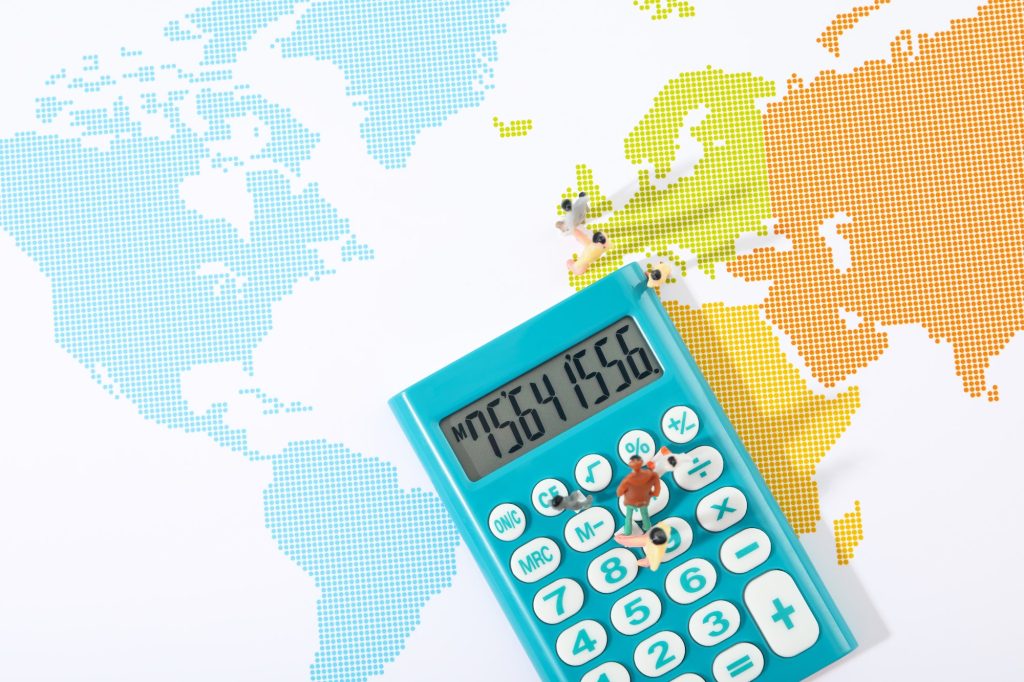Global growth is expected to stay below 3% over the next five years, making this perhaps the most pessimistic economic forecast from the IMF in over 50 years
The International Monetary Fund (IMF), in its recent World Economic Outlook for April 2023, has forecast global growth to fall to just 2.8%, down from 3.4% last year. Furthermore, global growth is expected to stay below 3% over the next five years, making this perhaps the most pessimistic economic forecast from the IMF in over 50 years.
This forecast is the best-case scenario, with a high probability of growth decelerating further to 2.5% and an even worse possibility of sub-1% growth. These near-recessionary figures show that the world economy is facing multiple shocks that put the standards of living of billions of people at risk.
While this dark prediction is a result of many different factors, some of the biggest risks to international growth are deglobalisation, financial instability, and the continued fallout from the Covid-19 pandemic and Russian-Ukrainian war, factors which shall be explored in this article.
An Increasingly Fragmented World
Probably the biggest drag on global growth this year – and coming ones, is the fragmentation of the global economy into competing geopolitical blocs. While this has been an ongoing trend for the past decade, deglobalisation is only expected to pick up pace in the coming years as ideological, political, and military tensions spill over into the world of trade and investment.
An important trend that the IMF points out is the phenomenon of ‘friendshoring’ or ‘allyshoring,’ where countries are steadily rerouting FDI away from perceived foes and towards strategic allies. As FDI stops being based on economic logic in favour of diplomatic and strategic logic, cross-border investment is reducing both in scale and expected returns. This especially bodes ill for the developing world, as countries in Africa, Latin America, and Southeast Asia will be forced to choose sides to attract capital.
Some of the major milestones of a shattering world economy in recent years include Brexit, the ongoing cold war between the United States and China, the Russian invasion of Ukraine, steadily increasing state piracy along major shipping lanes, and the American retreat from global affairs.
In past times, such as the 1970s oil shocks, the United States would have stepped in to fill the breach and engineer stability, but with the United States under the successive Trump and Biden governments abandoning global alliances and trade blocs to focus on domestic issues, American security, and economic guarantees are no longer what they used to be.
Recovery is further hampered by financial instability
While not the prime cause of slowing global growth, a factor that the IMF warns could significantly hamper, prospects of economic revival is the looming threat of financial instability and bank runs in the Western world, especially America, as banks struggle to adapt to rising interest rates.
As recent events such as the collapses of Credit Suisse, First Republic Bank, Silicon Valley Bank, and Signature Bank have shown, the Western financial system is showing major signs of stress, and it is an open question at this point whether a broad spectrum collapse of the entire financial system is in the works.
The biggest factor pressuring banks today is the deflationary action undertaken by central banks across the world. Recent inflationary trends, including COVID-19 lockdown-related supply chain shocks, massive fiscal stimulus from governments during the same, the war in Ukraine throwing international energy, food, and minerals markets into turmoil, and rock bottom interest rates (especially in the West) ever since the 2008 Great Recession have sent consumer price indexes the world over shooting up.
The resulting surge in inflation has resulted in governments scrambling to avoid political instability by raising interest rates. However, with banks accustomed to near-zero interest rates for almost a decade now, the sudden bump in interest rates has left several financial institutions struggling to stay afloat.
A thin silver lining in a very large cloud
This faltering global growth is, however, not evenly distributed, with certain regions doing markedly better than others. The bright spot of the world is surely the Asia-Pacific region, with just India and China expected to make up half of the global growth this year. Both India and China are expected to have above 5% growth, as China rebounds strongly from its zero-Covid policy, and India becomes a safe haven for global investment. Other ‘winners’ could include Indonesia, Vietnam, South Korea, and Mexico.
On the other hand, Europe is expected to be hit especially hard as it deals with the near-impossible task of simultaneously dealing with demographic crises, energy shocks, plunging consumption, and security threats from Russia. Growth on the continent is expected to drop below 1% while it also deals with stubbornly high inflation.
While no prediction is 100% correct, the IMF has a reputation for being the premier economic forecaster in the world, and such a pessimistic outlook for the future is a sign of the world economy entering a new period of low growth, high inflation, and economic conflict over scarce resources.
